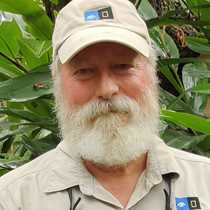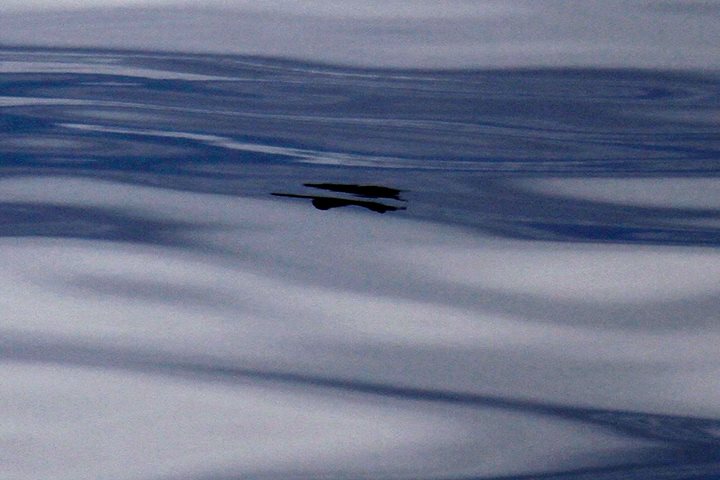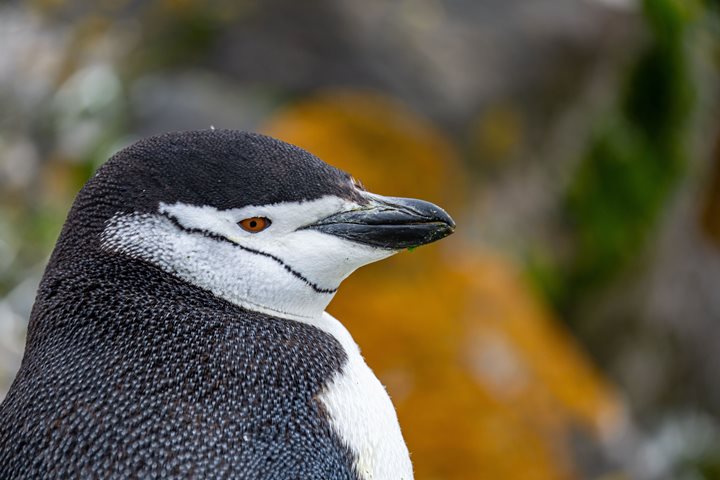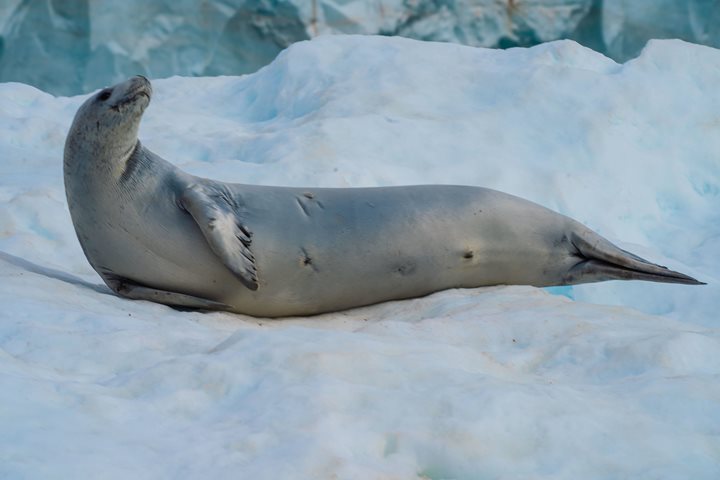Early this morning we visited tiny Cuverville Island, a very interesting rocky island in the middle of beautiful Errera Channel between Ronge Island and the Arctowski Peninsula on the mainland. This is a very steep, round island that has a permanent snow cap on the top and on one side, and a very impressive steep moss-covered flank on the other. Cuverville is an important breeding site for about 5,000 pairs of Gentoo penguins, as well as southern giant petrels, pintado petrels, snow petrels, Wilson’s storm-petrels, blue-eyed shags, sheathbills, brown and south polar skuas, kelp gulls, and Antarctic terns. It’s also a good place to see Weddell seals and leopard seals, and we saw both species. In addition to the extensive moss beds, many of the exposed lower rocks are covered with colourful orange and yellow lichens, and a few isolated clumps of hair grass were also found. Okay, not everyone was overwhelmed by the tiny clumps of grass, but this is one of only two species of vascular flowering plants found in Antarctica. About 30 of us climbed very high up to the top of the island over rocks and through steep snow cover and were rewarded with stunning views of the Errera Channel, the surrounding mountains, and more. The bay near the landing contained many large, beautiful, grounded icebergs that created an amazing photographer’s paradise.
This is the largest breeding colony of Gentoo penguins in the peninsula and as we were fairly late in the season, many of the adults were moulting. This meant that they were already done raising their chicks, or had lost them to skuas. The moulters looked miserable. Does it itch? They typically find a protected spot out of the worst of the wind, perhaps beside a large rock, and just stand there for a couple weeks or so as they experience what ornithologists call a ‘catastrophic moult’. This means all the feathers are replaced during a very short time. Most typical birds, i.e. flying birds, replace their feathers with a “sequential moult”, which allows them to still fly and continue normal life while their feathers are replaced a few at a time over a long period of time. Some birds even moult twice a year (think of the warblers that have both breeding plumages and migrating plumages). Many of the Gentoo chicks were already beginning to moult into their juvenile plumage and were near fledging. During our visit a couple leopard seals were patrolling just offshore looking for easy penguin meals. In addition, dozens of skuas were continuously flying overhead while on the prowl for defenceless chicks. It was interesting to watch how the chicks reacted every time a skua landed near them, as this caused them to herd together and move away in solid mass. A couple of savage skua attacks upon chicks were witnessed, which upset several of us, and there were many dead chicks being scavenged upon by skuas. It’s hard to watch this carnage against innocent, defenceless chicks, but we all know it is part of the system here. And, that system works well, because they were lots of healthy chicks.
When we departed from Cuverville Island in the late morning, we headed northward into the Gerlache Strait. This scenic waterway measures nearly 320 km (200 miles) and is surrounded by tall, rugged mountains, numerous islands, passes and bays, and countless glaciers. Just before lunch, several humpback whales were sighted ahead of the vessel. Soon, we could see numerous whales in all directions as far as the eye could see. Two adults and a calf purposefully approached our vessel and swam about directly in front of us while we were drifting in place. After several minutes, the adults (presumably the mother and an assisting “auntie”) went off a couple hundred meters or so to return to their feeding and seemingly left the calf in our care. The small (relatively speaking) calf splashed, spy hopped, tail lobbed, flipper slapped, and cavorted around the bow of the ship for a half hour and was definitely showing off and playing with us…probably encouraged by the yells every time it lifted its head above the surface to look at us. Eventually, the adults came back to us and led the calf away. It was an extraordinary encounter and we really felt as though the adults had entrusted us to look after the youngster. The rest of the day was at sea, as we completed our transit of the Gerlache Strait and entered into the Bransfield Strait on our way northward and then northeastward around the tip of the Antarctic Peninsula.







